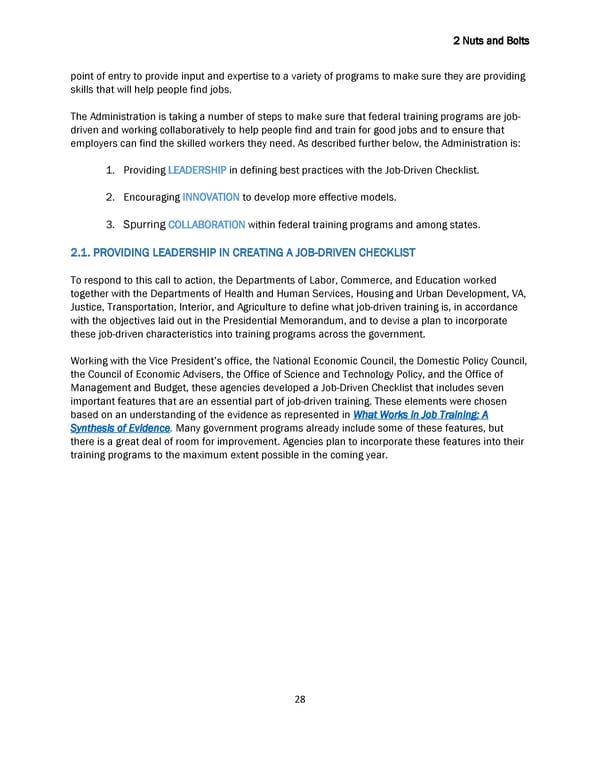2 Nuts and Bolts point of entry to provide input and expertise to a variety of programs to make sure they are providing skills that will help people find jobs. The Administration is taking a number of steps to make sure that federal training programs are job- driven and working collaboratively to help people find and train for good jobs and to ensure that employers can find the skilled workers they need. As described further below, the Administration is: 1. Providing LEADERSHIP in defining best practices with the Job-Driven Checklist. 2. Encouraging INNOVATION to develop more effective models. 3. Spurring COLLABORATION within federal training programs and among states. 2.1. PROVIDING LEADERSHIP IN CREATING A JOB-DRIVEN CHECKLIST To respond to this call to action, the Departments of Labor, Commerce, and Education worked together with the Departments of Health and Human Services, Housing and Urban Development, VA, Justice, Transportation, Interior, and Agriculture to define what job-driven training is, in accordance with the objectives laid out in the Presidential Memorandum, and to devise a plan to incorporate these job-driven characteristics into training programs across the government. Working with the Vice President’s office, the National Economic Council, the Domestic Policy Council, the Council of Economic Advisers, the Office of Science and Technology Policy, and the Office of Management and Budget, these agencies developed a Job-Driven Checklist that includes seven important features that are an essential part of job-driven training. These elements were chosen based on an understanding of the evidence as represented in What Works in Job Training: A Synthesis of Evidence. Many government programs already include some of these features, but there is a great deal of room for improvement. Agencies plan to incorporate these features into their training programs to the maximum extent possible in the coming year. 28
 Biden Ready to Work White Paper 7/22/14 Page 27 Page 29
Biden Ready to Work White Paper 7/22/14 Page 27 Page 29